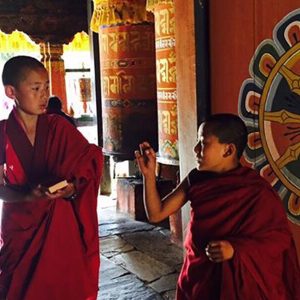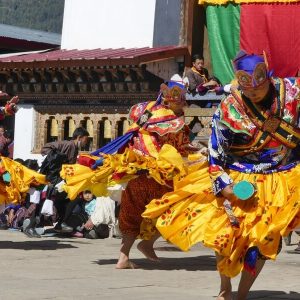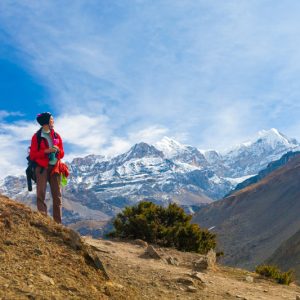Bhutan isn’t your average travel destination. Nestled in the Himalayas, this tiny kingdom has long remained mysterious to the outside world. But beyond its dramatic peaks and fluttering prayer flags lie surprising traditions, unexpected laws, and rare phenomena that make Bhutan truly unconventional.
Whether you’re planning a trip or simply curious, here are 21 fascinating, off-the-beaten-track facts about Bhutan that might just surprise you.
1. The King Abdicated the Throne… But Bhutan Remains a Kingdom
In 2006, King Jigme Singye Wangchuck voluntarily abdicated in favor of democratic reforms—yet Bhutan remains a constitutional monarchy. Under the 2008 Constitution, the King serves as Head of State, while an elected National Assembly and National Council govern policy. This hybrid system preserves tradition while embracing participatory governance.
2. Everyone Ages a Year on New Year’s Day
Many older or rural Bhutanese don’t know their actual birthdate in the Gregorian system—most were born according to the traditional lunar calendar. As a result, government records typically assign January 1 as their “official” birthday, so everyone appears to age collectively at the start of the year. This simplifies administration and reflects a community-focused society. However, the younger generation—especially in urban areas—is increasingly celebrating their real birthdays.
3. Bhutan Bans Animal Slaughter—But Not Meat: A Moral Middle Path
Bhutan’s Buddhist ethos encourages compassion toward all living beings, expressed through rituals like tsethar—saving animals from slaughter. Wild animals and certain species receive legal protection, but exceptions exist for self-defense, crop protection, or other approved actions. Rural livestock farmers still engage in animal husbandry and occasional butchering, though typically outside of formal slaughterhouses. Traditional practices like traps are regulated and sometimes permitted, but kill-based methods without proper authorization can lead to penalties.
4. No Smoking in Public
Bhutan became the first country to ban the sale of tobacco products. Smoking in public spaces is prohibited, and importing tobacco involves heavy taxes and strict controls. The ban reflects the country’s emphasis on physical and spiritual health.
5. The Only Carbon-Negative Country

Bhutan is globally recognized as the only carbon-negative country, largely due to its massive forest cover (over 70%) and reliance on hydropower. The nation absorbs more CO2 than it emits, exporting clean energy to neighboring countries. Although some debate the measurement details, Bhutan’s ecological achievement remains remarkable.
6. The Last Country to Introduce Television
TV and internet were banned until 1999 to protect cultural values. The first broadcast was a delayed airing of the 1998 FIFA World Cup final. Today, Bhutanese enjoy nationwide access to BBS (Bhutan Broadcasting Service), with high-definition broadcasts beginning in 2023. Media is still closely monitored to preserve cultural integrity.
7. Free Education and Healthcare for All
All Bhutanese citizens have access to free education and healthcare. While rural areas still rely on monastic institutions and traditional medicine, literacy rates and life expectancy have improved dramatically. The government continues to invest heavily in these sectors.
8. The National Dress Is Required in Schools and Government Offices
Bhutan’s traditional dress—the Gho for men and Kira for women—is mandatory for students, government workers, and during formal occasions, as part of the national etiquette code called Driglam Namzha. While widely respected, wearing traditional dress is more flexible in daily life, especially in urban areas where Western clothing is common.
9. Bhutanese Still Whisper About the Yeti
Known locally as the Migoi, the Yeti is a legendary ape-like creature believed to roam Bhutan’s high Himalayas. Villagers tell stories of eerie calls and unusual footprints with backward toes, some preserved in monasteries. The Migoi is seen as both a mysterious beast and a protective spirit, deeply tied to Bhutanese folklore and spirituality. Occasional sightings and government investigations keep the legend alive, symbolizing respect for nature and the mountains.
10. Hornets Are a Delicacy
Hornet larvae are a sought-after delicacy in rural Bhutan. Believed to aid sleep, reduce blood pressure, and boost appetite, these protein-rich insects are harvested from wild nests—despite official restrictions. Hornets are typically fried or added to curries.
11. Colossal Fortresses Built Without Nails
Bhutanese architecture uses traditional joinery methods similar to Japanese “tsugite.” Massive dzongs and wooden bridges are constructed using interlocking wooden joints and mud-packing, not metal nails. This technique enhances earthquake resistance and reflects deep craftsmanship.
12. No McDonald’s or Starbucks
Bhutan does not have major global fast-food chains like McDonald’s or Starbucks. The government restricts foreign franchises to protect local culture and economy and has not joined the World Trade Organization, which limits entry of such brands. However, some international chains like Domino’s Pizza and KFC operate in Bhutan through local partnerships, mainly in the capital, Thimphu.
13. Archery: Bhutan’s Vibrant Social Sport
Archery is Bhutan’s national sport, played with bamboo bows and wooden targets. It’s as much a cultural celebration as a sporting event, with tournaments held year-round across the country. Expect colorful traditional dress, singing, dancing, taunting opponents, and drinking homemade ara (rice wine) between rounds.
14. Women Are Often the Heads of the Family
In many regions of Bhutan, inheritance passes through daughters, and men often move into their wives’ homes after marriage. Women frequently make key family decisions. In highland areas, polyandry (one woman marrying multiple men) still exists, reflecting both practical resource-sharing and matrilineal traditions.
15. The Land of the Thunder Dragon

Bhutan’s local name, “Druk Yul” means “Land of the Thunder Dragon“. It derives from the fierce Himalayan storms that echo through the valleys. The white dragon on the national flag symbolizes protection, strength, and the country’s deep spiritual roots.
16. No Traffic Lights in the Capital
Thimphu, Bhutan’s capital, is the only national capital in the world without traffic lights. This unique approach reflects Bhutan’s emphasis on cultural preservation and community engagement. In 1995, a set of traffic lights was briefly installed but was quickly removed due to public dissatisfaction; residents preferred the personal touch of human traffic control over automated systems.
Instead of traffic lights, Thimphu relies on white-gloved traffic police officers who direct traffic with graceful hand gestures from small booths at major intersections. This practice not only maintains the city’s charm but also fosters a sense of connection and order among the community
17. Gross National Happiness: More Than a Slogan
Bhutan measures development using Gross National Happiness (GNH), not GDP. The GNH Index includes 9 domains and 33 indicators, such as health, education, culture, ecology, and psychological well-being. Individuals are surveyed using the Alkire-Foster method, and policy is shaped based on citizens’ collective happiness.
18. Why Bhutan Was Never Colonized
Bhutan’s rugged Himalayan terrain and early unification under Zhabdrung Ngawang Namgyel in the 17th century made invasions difficult. Although the British fought brief wars with Bhutan in the 1800s, they never colonized it. Instead, Bhutan used strategic diplomacy—signing treaties like the 1910 Treaty of Punakha—that preserved its internal autonomy while ceding foreign affairs to Britain, and later India. This careful balancing act helped Bhutan remain an independent kingdom and avoid colonization.
19. The World’s Highest Unclimbed Peak

Gangkhar Puensum (7,570 meters) is Bhutan’s highest mountain—and it remains unconquered. Bhutan implemented a two-tiered ban: first in 1994 for all peaks above 6,000 meters, and then a total mountaineering ban in 2003. This definitive policy ensures Gangkhar Puensum remains unclimbed, preserving its status as a sacred and untouched peak.
20. Unusual Phallic Symbolism
In rural Bhutan, colorful paintings of erect phalluses decorate homes and shops—not as vulgar jokes, but as sacred symbols. They trace back to Lama Drukpa Kunley, the 15th-century “Divine Madman”, who used shocking behavior and humor to teach Buddhist wisdom. He believed the phallus could ward off evil spirits and promote fertility. Today, these symbols remain a respected part of Bhutanese culture, especially near the Chimi Lhakhang (Fertility Temple), where pilgrims still seek blessings from a wooden phallus in hopes of conceiving.
21. Plastic Bags Are Banned
Bhutan banned plastic bags way back in 1999, long before most other countries even started talking about single-use plastics. It’s part of the kingdom’s deep respect for nature.
Visit this Surprising Country with Across Bhutan!
Bhutan is full of delightful contradictions. It’s ancient yet forward-thinking, traditional yet refreshingly unique. For those seeking an off-the-beaten-path experience filled with rarities, remarkable feats, and unconventional wisdom, Bhutan is truly like nowhere else.
If you’re planning your next adventure and want to go beyond the ordinary, consider the last Himalayan kingdom—not just for its beauty, but for its wonderfully strange and inspiring ways.













